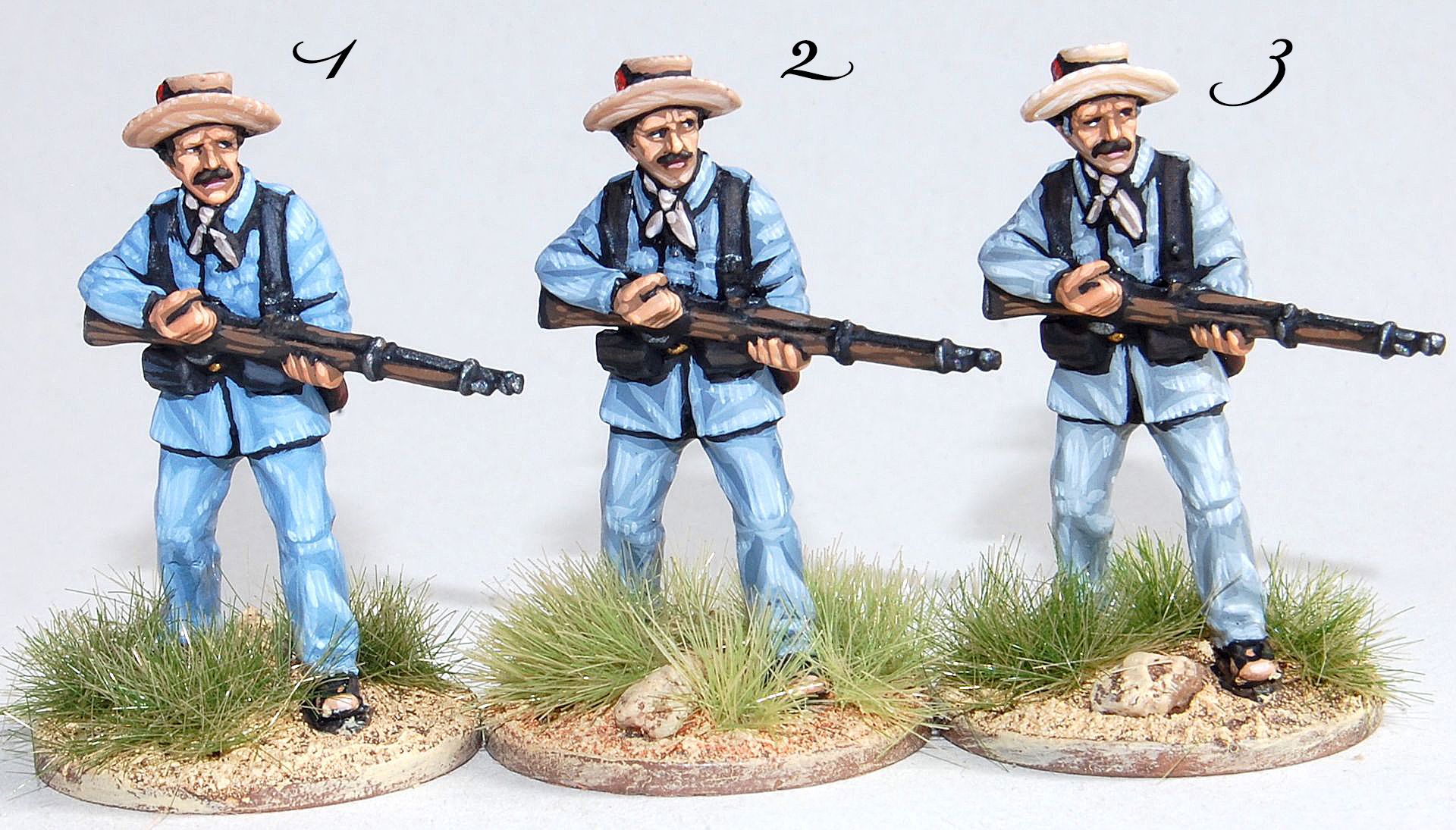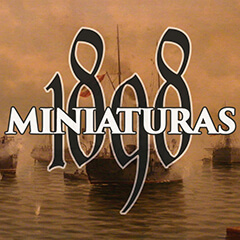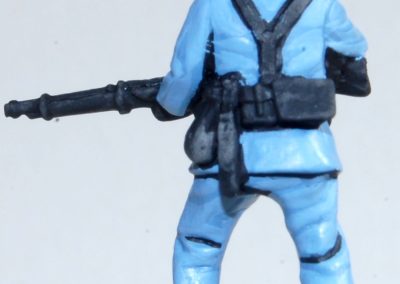PAINTING RAYADILLO
Javier Gómez "El Mercenario"
1898 Miniaturas

MATERIALS
For this tutorial I’ve used copies of the first figure we produced, which rear equipment (bayonet, cartridge box) was still unfinished –something sorted in the pieces now available at our online store. I used paints from Vallejo Model Color range (three digit references, eg. 863), and any primer spray (although I always recommend the Citadel one).
PREPARATION
Although 1898 Miniaturas figures are very clean form flashes, we’ll remove any burr we could find with our modelling knife, and glue the miniature to an empty Vallejo bottle using cyanocrylate adhesive. Then we’ll prime the figure spraying a thin white coat, that will repaint with Black (950) as a kind of lining. You could also prime straight with black spray, but you will also need to repaint those areas where metal remains visible.
UNIFORM
As explained in the article on Spanish colonial uniforms in the History section of this website, there were two different rayadillos, the Peninsular one, also used in Africa, with thicker stripes, and the overseas (Ultramar) one. After Camareno, the latter stripes had 1,5 mm wide, with a 0,6 mm white intervals between them. Thus, the dominant colour was that of the stripes, indistinguishable at a certain distance. Instead, what the eye see is the shade result of the combination of the blue of the stripes –originally Prussian Blue, but quickly worn out due to tropical sun and rains– and the white of the fabric, a shade that would go from a bright grey blue to an off-white. Uniform was completed with other singular items such as the jipijapa straw hat or the guajira boots worn both in Cuba and the Philippines.
TECHNIQUE
We’ll use the classic base colour plus two highlights system, but at the end we’ll add an extra highlight to simulate the rayadillo. With this sample we’ll paint a brand new clean uniform, so we will paint all the uniform surface using Grey Blue (943) as the base colour.
We’ll use the same colour scheme for the guajira boots, that will be painted at the same time than the hat, and we’ll finish the job painting the cockade: first using Chocolate Brown (872) as base colour, then painting the middle with Yellow Ochre (913) and then the crown and the central spot with Red (947). Finally it’s the turn of the Mauser, the belts and cartridge boxes and the face and hands of our long-suffering soldier.
Shades
About the shades, as we mentioned before the Spanish overseas rayadillo could change according to the wear and tear caused by tropical weather. If the colour scheme of this sample looks too bright to us, we could use different options for the base colour, such as French Blue (900) mixed with White (951) for the highlights, or a mix of Blue Grey (943) plus Cork Brown (843) or similar, mixed with Iraqi Sand (819) and White (951) for the highlights.

CHART OF COLOURS
| TO PAINT | BASE COLOUR | 1st HIGHLIGHT | 2nd HIGHLIGHT | 3rd
HIGHLIGHT |
| Uniform figure 1 | Grey Blue (943) | Grey Blue (943) + White (951) | 1st highlight +White (951) | 2nd highlight +White (951) rayadillo |
| Uniform figure 2 | French Blue (900) | French Blue (900) + White (951) | 1st highlight + White (951) | 2nd highlight +White (951) rayadillo |
| Uniform figure 3 | Grey Blue (943) + Cork Brown (843) | Base colour + Iraqi Sand (819) +White (951) | 1st highlight + White (951) | 2nd highlight + White (951) rayadillo |
| Hat figures 1 & 2 | Cork Brown (843) | Cork Brown (843) + Iraqi Sand (819) | 1st highlight + White (951)
rayadillo |
|
| Hat figure 3 | Desert Yellow (977) | Desert Yellow (977)+ White (951) | 1st highlight + White (951)
rayadillo |
|
| Belts figure 1 | Black (950) | Black (950) + Neutral Grey (992) | 1st highlight + Neutral Grey (992) | |
| Belts figure 2 | Black (950) | Black (950) + Chocolate Brown (872) | 1st highlight + Chocolate Brown (872) | |
| Belts figure 3 | Black (950) | Black (950) + Mahogany Brown (846) | 1st highlight + Mahogany Brown (846) | |
| Flesh | Beige Brown (875) | Light Brown (929) + Flat Flesh (955) | Flat Flesh (955) | |
| Mauser | Chocolate Brown (872) +Black (950) | Chocolate Brown (872) +Beige Brown (875) |
Bibliography
Gómez Valero, J. (2015): Painting Wargame Miniatures. Barnsley: Pen & Sword.
Guerrero Acosta, J. M. (2003): El Ejército español en Ultramar y África (1850-1925). Los soldados olvidados del otro lado del mar. Madrid: Acción Press.
¡Rayadillo! The Spanish Colonial Uniform Research Project. William Combs website, a major source of information (in English).



















